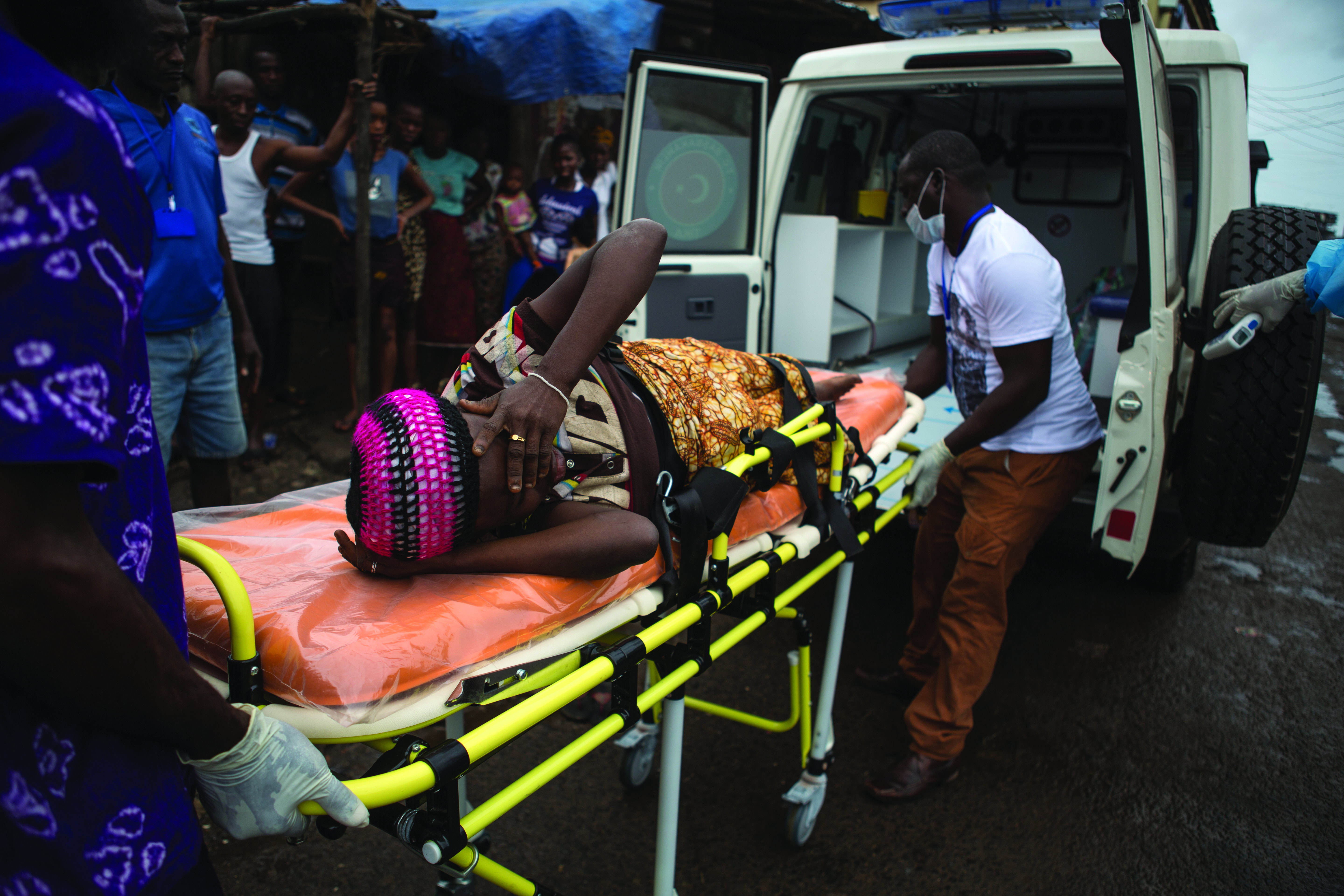By Irene Chung
Eternal Love Winning Africa is one of few maternity wards in Monrovia, Liberia where a woman can still deliver her baby. There, midwives don full Ebola suits and conduct chlorine spray-downs after each shift. But even so, the high exposure to blood and other bodily fluids during delivery makes the maternity ward an Ebola hazard zone.
With the explosive rise of Ebola, which has infected more than 21,000 people worldwide since February 2014, the disease has chosen its afflicted victims discriminately. The crisis has been disproportionately detrimental to pregnant women, who account for 75 percent of Ebola-related deaths in Liberia and 59 percent in Sierra Leone, according to United Nations Women. The Oxford Journal of Infectious Diseases notes that the fatality rate of Ebola is around 95 percent for pregnant women with treatment, a near death sentence compared to the 60 percent fatality rate for non-pregnant patients with treatment.
“The reality is that pregnant women are facing a double threat—dying from Ebola and from pregnancy or childbirth,” said Dr. Babatunde Osotimehin, the executive director of the United Nations Population Fund (UNPF). “Ebola is not only killing those infected, but also those affected. Pregnant women and girls are at greater risk.”
A devastating example of health disparity by wealth, the maternal mortality ratio in developing countries is more than 14 times that of developed regions, according to the World Health Organization (WHO). Over half of maternal deaths occur in sub-Saharan Africa alone, which includes Guinea, Liberia, and Sierra Leone, the countries most heavily afflicted by Ebola. The virus has deterred the roll-out of health care on both the supply and demand sides in these countries. Even as hospitals turn away pregnant patients from fear of infection through amniotic fluid, expecting mothers have also been reluctant to seek health services from fear of infection in facilities with Ebola patients. The Kenema Government Hospital in Sierra Leone, which serves three districts of over a million people, saw a stark drop in its maternal patient count in July 2014. The facility regularly delivers 150 babies and conducts 17 caesarian sections each month; however, in 2014, this number plunged rapidly, with only 93 expecting mothers seeking deliveries.
The Ebola crisis has devastated the overall health infrastructure of affected countries. “They pretty much shut down everything that wasn’t Ebola treatment. There were stories of people dying of relatively easy to treat diseases because doctors didn’t want to touch them,” explained Ryan Boyko, a doctoral candidate in the Yale School of Public Health who was suspected of being infected with Ebola after traveling to Liberia in September and October 2014 to develop apps for Ebola data collection. With the decline in primary care, the availability and quality of gynecological and maternal services has also suffered. In reaction to the virus, Sierra Leone’s UNPF has reduced prenatal consultations for pregnant women by almost 50 percent. The Ebola-like symptoms of pregnancy such as bleeding and cramping have created a stigma against expecting mothers, which has resulted in an increase in the number of stillbirths in Liberia and Sierra Leone.
Because women are primary caretakers in many West African societies, they are more likely to be infected with Ebola through bodily fluid contact. Additionally, as the crisis breaks down family structures and stable sources of income, women bear a greater economic burden within family units, especially those with children. “The impact is not just in mortality, but it has social and economic ramifications that ripple the entire system,” said Dr. James Childs, a senior scientist in the Department of Epidemiology and Microbial Diseases at the Yale School of Public Health.
The epidemic threatens to exacerbate the maternal health gap between high and low-income countries by further impoverishing highly affected areas, where 99 percent of daily pregnancy and childbirth-related deaths occur. “One of the reasons that the Ebola outbreak got out of hand has to do with the state of the system in these countries. There was already a deficit,” said Dr. Unni Karunakara, former president of Doctors Without Borders. “I personally feel that the system has been set back by a few years.”
Experts agree that the inadequate response to Ebola—both globally and locally—has exacerbated the outbreak’s impact. “It’s almost like a perfect storm that came together,” said Karunakara. “Foreign aid, though necessary, has completely fallen short. The international community failed to meet the Ebola outbreak and the challenges posed by it.”
With the initial hype of the virus reined in, both local governments and foreign aid actors are mobilizing to stem the epidemic. Yet, such relief comes too late for many women and babies. Hope now lies in the collaborative efforts of national and international aid organizations to save the 120,000 pregnant women in Guinea, Liberia, and Sierra Leone that the UNPF predicts will die without obstetric care this year.
Irene Chung ’17 is a Political Science major in Branford College. Contact her at irene. chung@yale.edu.

